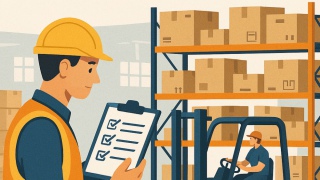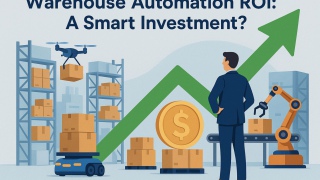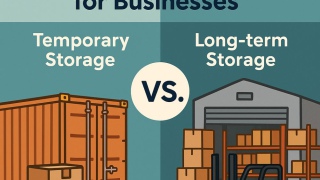IoT in Warehousing: What Logistics Directors Need to Know

In the modern era of digital transformation, the Internet of Things (IoT) has evolved from a buzzword into a powerful tool for business process optimization. For logistics directors aiming to enhance efficiency, reduce costs, and strengthen their competitive edge, understanding and implementing IoT technologies in warehousing is becoming a critical objective. The integration of connected devices into the warehouse infrastructure unlocks unprecedented opportunities for control, automation, and analytics.
What is IoT in a Warehouse Context?
Simply put, warehouse IoT is a network of interconnected physical objects—from racks and vehicles to gates and containers—equipped with sensors, software, and other technologies. These devices can collect and exchange data in real time without human intervention. For a logistics director, this signifies a shift from reactive to proactive, data-driven management.
Key IoT Devices and Their Warehouse Applications
-
Smart Sensors: These are the foundation of IoT in a warehouse. Temperature and humidity sensors are indispensable for storing pharmaceuticals or food products, ensuring regulatory compliance. Motion and light sensors help optimize energy consumption, while vibration sensors on equipment can predict potential breakdowns.
-
RFID Tags and Readers: Radio-Frequency Identification (RFID) technology surpasses traditional barcoding in speed and accuracy. RFID tags attached to pallets or individual items enable instant inventory counts, track the movement of goods throughout the warehouse in real-time, and virtually eliminate errors in order fulfillment.
-
Automated Guided Vehicles (AGVs) and Robots: Modern AGVs and Autonomous Mobile Robots (AMRs) use connected devices like LiDAR and cameras for navigation. They automate the movement of goods from the receiving area to storage and on to the shipping zone, significantly increasing operational speed and reducing reliance on manual labor.
-
Drones (UAVs): Unmanned aerial vehicles, equipped with high-resolution scanners and cameras, can perform a complete inventory of a large warehouse in a matter of hours, especially in hard-to-reach, high-up areas. This minimizes downtime and reduces risks for personnel.
-
Wearable Devices: Smart glasses, ring scanners, and arm-mounted data terminals free up employees' hands. They can display order picking instructions directly in a worker's field of vision, scan barcodes, and instantly transmit information to the Warehouse Management System (WMS), boosting productivity and accuracy.
Strategic Advantages for Logistics Directors
Implementing IoT is not just a technological upgrade but a strategic investment that yields measurable results:
-
Total Operational Visibility: You gain a complete, real-time picture of everything happening in the warehouse. This allows for an immediate response to incidents like incorrect product placement or unauthorized access.
-
Inventory Optimization: Accurate data on inventory levels and movement helps prevent both out-of-stock and overstock situations, freeing up working capital and warehouse space.
-
Predictive Maintenance: Sensors on forklifts, conveyor belts, and other equipment analyze their condition and signal the need for maintenance before a breakdown occurs. This prevents costly downtime and extends the lifespan of the machinery.
-
Enhanced Safety: IoT solutions monitor the movement of personnel and equipment to prevent collisions. Environmental sensors track conditions, alerting to potential hazards like chemical spills.
-
Data-Driven Decision-Making: Analyzing big data collected from IoT devices allows you to identify hidden patterns, find process bottlenecks, and make informed strategic decisions about warehouse reorganization and workflow optimization.
Challenges and How to Overcome Them
Despite the clear benefits, IoT implementation comes with certain challenges. Logistics directors should address them proactively:
-
Integration with Legacy Systems: A key task is to ensure the seamless integration of connected devices with your existing WMS, ERP, and other IT systems. The solution is to choose platforms with open APIs and engage skilled integrators.
-
Cybersecurity: A vast number of connected devices create potential vulnerabilities. It is crucial to build a multi-layered security system from the outset, including data encryption and access control.
-
Initial Investment: The cost of hardware and software can be significant. It is vital to conduct a thorough Return on Investment (ROI) analysis, viewing the project as a long-term investment in efficiency and competitiveness.
Conclusion
The future of warehousing is intrinsically linked to IoT. Technologies that seemed like science fiction yesterday are becoming the standard for operational excellence today. For a logistics director, ignoring these changes means consciously conceding ground in the market. A successful IoT implementation allows you not just to optimize current processes, but to build an intelligent, agile, and fully transparent warehouse that is ready for the challenges of tomorrow.
_0x70_d59.png)



